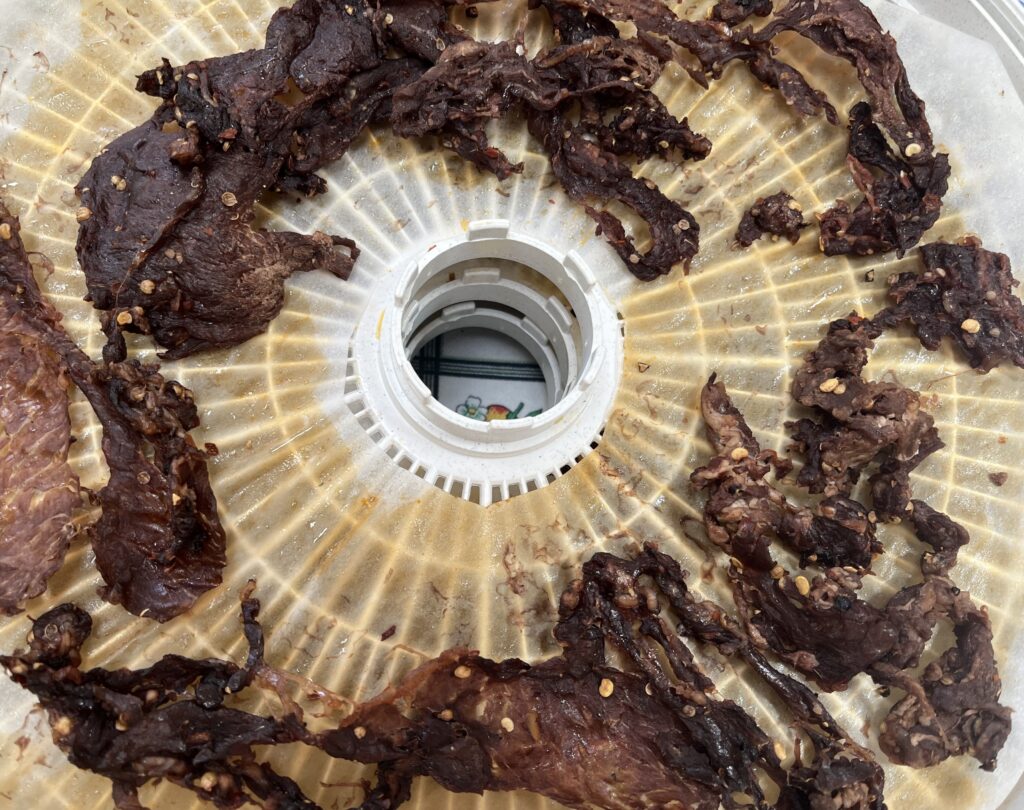
Biltong is the South African version of jerky. Two differences from American jerky are that it is usually flavored with coriander and vinegar, both of which help preserve the biltong. I spotted a simple version of biltong in a South African cookbook, Charcuterie by Paul Thomas. Adapting his recipe to my situation, I used as the meat thinly sliced rib eye steak, which is available at New Grand and other Asian markets for hot pots, etc., and I dried it in my food dehydrator. It all worked very well. We will enjoy this on the canoe trip which starts early next month.
500 g. rib eye or similar steak, sliced thinly
15 g. kosher salt
1 tsp. whole coriander seed
1 tsp. black peppercorns
1 tsp. red pepper flakes (optional)
½ tsp. brown sugar
1 Tbs. red wine vinegar.
Lightly crush the coriander seed with a mortar and pestle and put it in a small bowl with the salt. Crack the black peppercorns with the mortar and pestle and add to the bowl. Add to the small bowl the red pepper flakes and the brown sugar. Mix the salt and spices together.
Put the sliced beef in a gallon-sized ziplock baggie. Add the salt and spices and vinegar to the baggie. Massage and mix everything to coat the surfaces of the meat as much as possible. Marinade for 2-4 hours (I did 3 hours) in the refrigerator, flipping it from time to time.
Spread paper towels on a work surface. Spread out the meat on the paper towels and scrape off large pieces of coriander and pepper. Spread the meat over 3 or so trays in a food dehydrator and dry at 165 degrees until dry, but still flexible, which today took about 1.5 hours. Remove from the dehydrator and allow to cool on the counter before putting in a sealed bag or other container for storage. Properly dried and stored, the biltong will stay edible almost forever, but it will be at its best the first few months.

